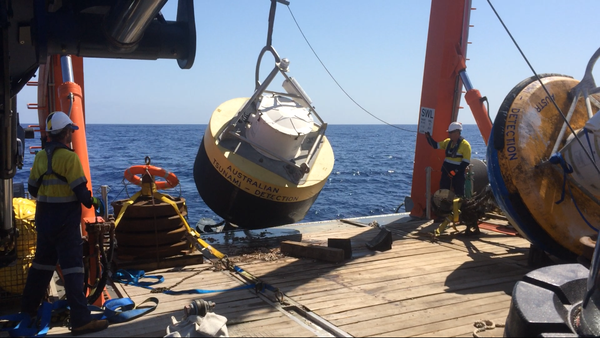Behind Australia's tsunami detection buoys
 Over the past week the Bureau of Meteorology replaced two deep-ocean tsunami detection buoys in the Indian Ocean. In tweets posted yesterday the BOM stated it was part of routine maintenance carried out every two years.
Over the past week the Bureau of Meteorology replaced two deep-ocean tsunami detection buoys in the Indian Ocean. In tweets posted yesterday the BOM stated it was part of routine maintenance carried out every two years.
So where are these buoys and how to they work?
Unlike wind-driven waves, tsunamis are caused by displacements of ocean water due to underwater earthquakes, landslides, volcanic eruptions, or other significant underwater disturbances.
They have huge wavelengths, much larger than open ocean swell, and travel at speeds in the range of 200m+ per second.
A tsunami detection buoy consists of two components: a pressure sensor anchored to the sea floor and a seperate surface buoy. The sea floor sensor measures the change in water pressure above it, and hence the change in the height of the water column. It filters out data with short wavelengths and sends the info acoustically to the surface buoy which then sends it by satellite back to the tsunami warning centre.
The buoys are placed in depths of 3000m or greater to avoid contamination by surface wind-waves and groundswells.
 When in normal operation the sea level information is sent from the surface buoy every 15 minutes to conserve battery life, but if a seismic wave is detected moving across the sea floor sensor, the buoy switches to 'event' mode and transmits sea level information every 15 seconds during the initial minutes and then every minute.
When in normal operation the sea level information is sent from the surface buoy every 15 minutes to conserve battery life, but if a seismic wave is detected moving across the sea floor sensor, the buoy switches to 'event' mode and transmits sea level information every 15 seconds during the initial minutes and then every minute.
The accuracy of the buoys is quite remarkable, with sea level changes of less than a millimetre able to be detected in the deep ocean.
Around Australia, we're most vulnerable to subsea earthquakes along subduction zones, where two tectonic plates collide with one sinking beneath the other. This is to the north-west, north-east, east and south-east of the country.
Currently there are two buoys off the north-west coast of Western Australia, two between Tasmania and New Zealand, with another two to our north-east between Papua New Guinea and New Caledonia. The first buoy was deployed in April 2007, 1200km from Tasmania in the south east Tasman Sea.
The buoys have to be specially positioned far enough away from any potential earthquake epicentre for there to be no interference from the earthquake itself, but also close enough to produce timely detection of the tsunami allowing forecasts to be issued to vulnerable coasts.
Below is the trace of the sea level taken off Japan after the devastating 2011 earthquake and tsunami. A large shift in sea level over two meters can be seen, and we're unfortunately all too aware of the consequences from this tsunami.

While the chance of a significant tsunami in Australia is minimal it's comforting to know that these buoys will provide an early warning system for us and surrounding countries if any disturbance is observed.

